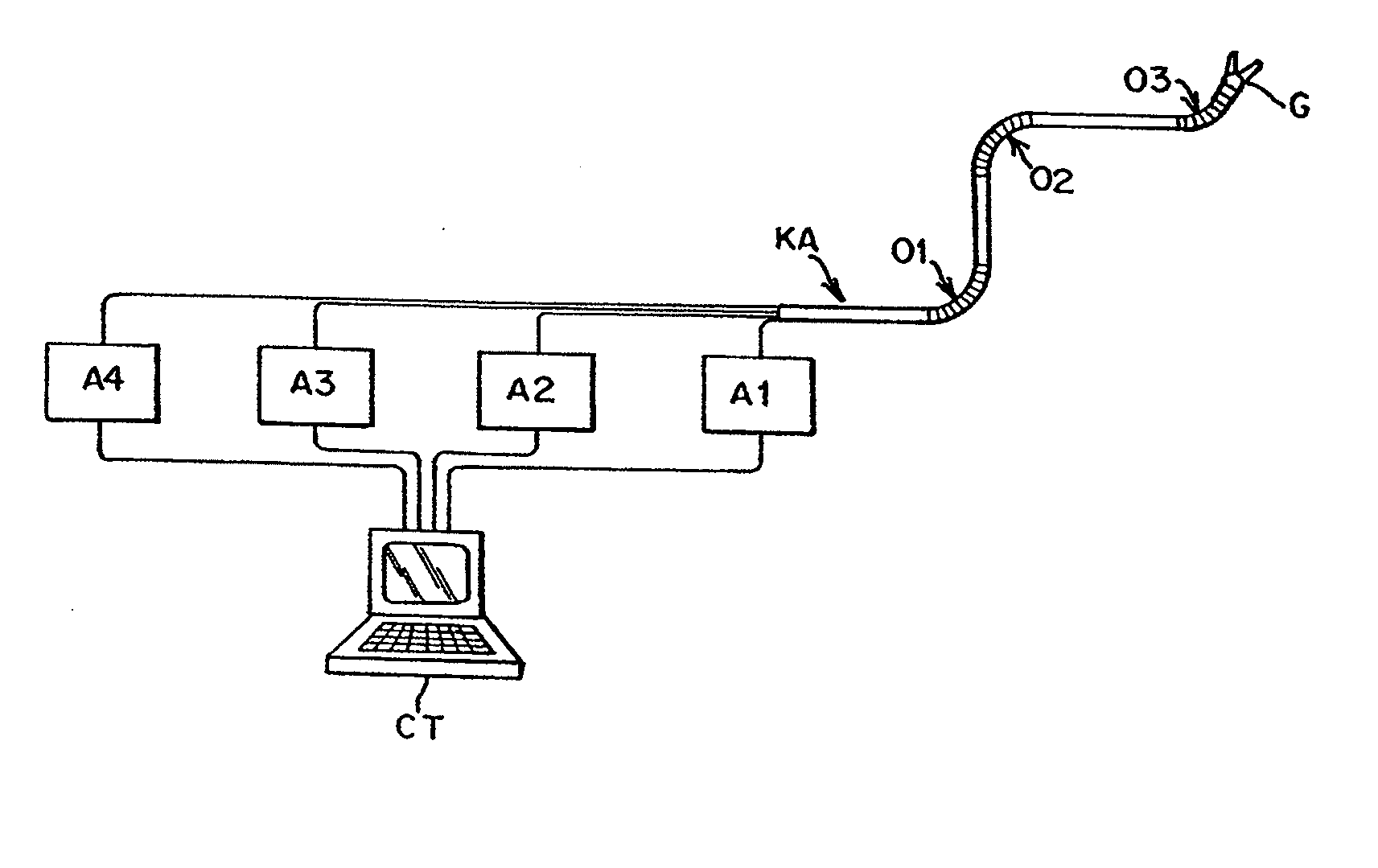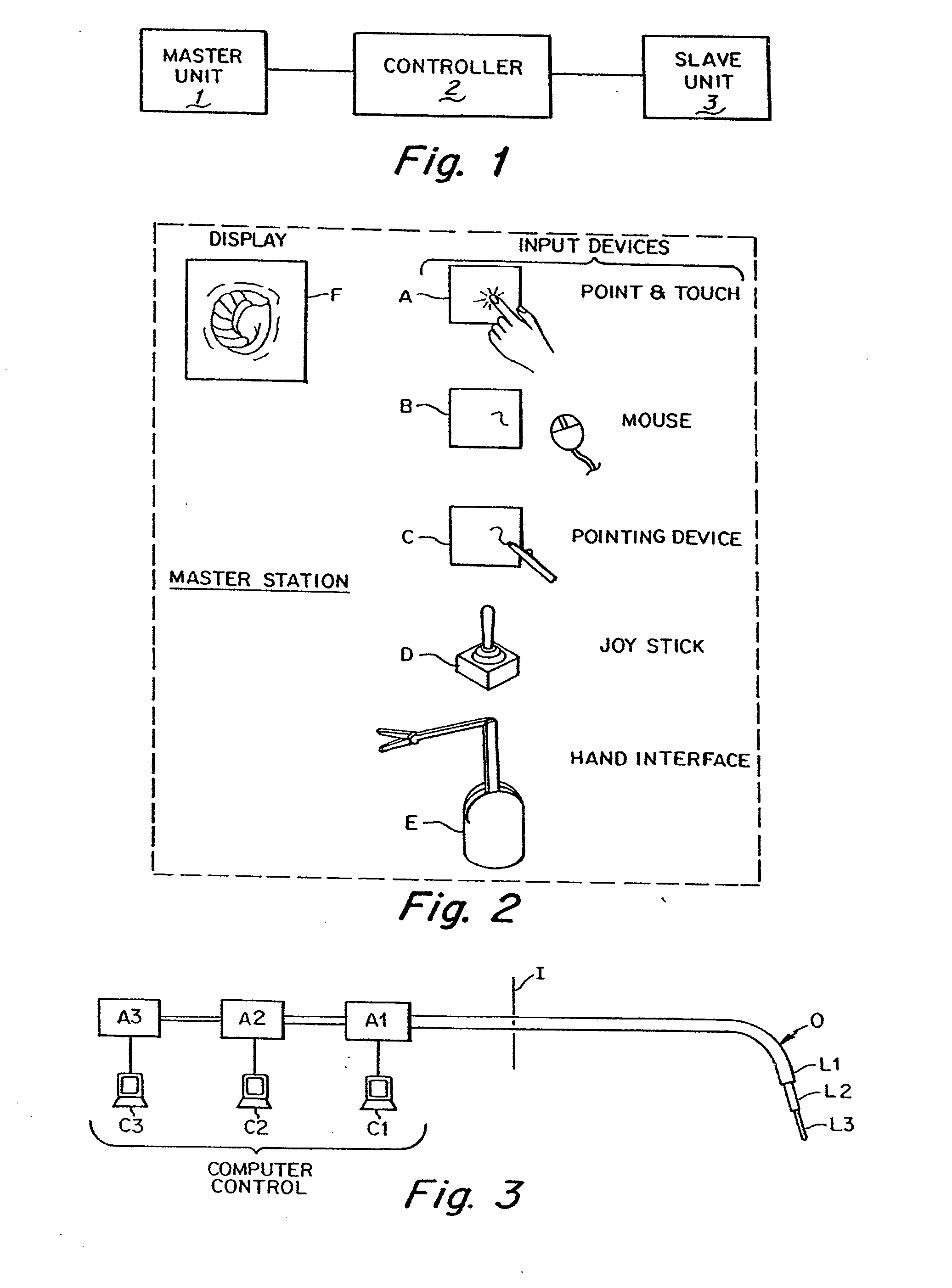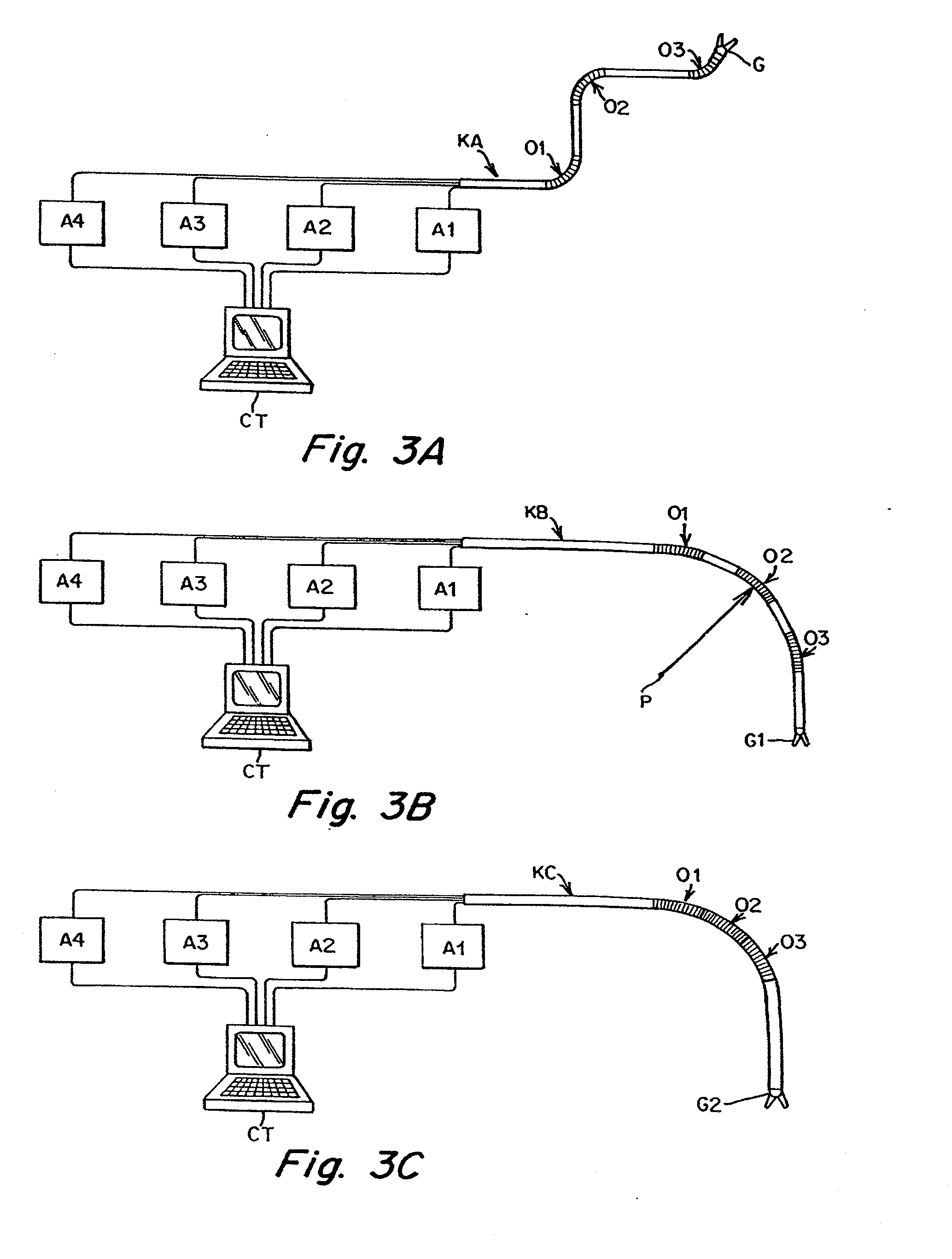Flexible instrument
a flexible, remote control technology, applied in the direction of surgical staples, catheters, surgical forceps, etc., can solve the problems of insufficient satisfaction of current instruments, forceps, scissors, etc., and the inability to control the relatively simple laparoscopic instruments
- Summary
- Abstract
- Description
- Claims
- Application Information
AI Technical Summary
Benefits of technology
Problems solved by technology
Method used
Image
Examples
Embodiment Construction
[0073] The present invention provides a system for remotely controlling a flexible instrument for use in medical applications, typically for operative or other medical procedures. The flexible instrument comprises a shaft or a tube of sufficient dimensions for passing through a small incision or natural body lumen or cavity and ultimately, for positioning a distal end of the shaft within the body at an internal target (operative) site. The flexible instrument can also support a tool at its distal end to allow more intricate medical procedures. A user or surgeon can control the position of the shaft from a master station, allowing operation from another part of the operating room, or even from another room or another building. In one aspect of the invention, the shaft can comprise one or more flexible segments, which a user can controllably bend, providing finer control in directing the shaft toward the target site. The control can result in, for example, a deflection or turning of t...
PUM
 Login to View More
Login to View More Abstract
Description
Claims
Application Information
 Login to View More
Login to View More - R&D
- Intellectual Property
- Life Sciences
- Materials
- Tech Scout
- Unparalleled Data Quality
- Higher Quality Content
- 60% Fewer Hallucinations
Browse by: Latest US Patents, China's latest patents, Technical Efficacy Thesaurus, Application Domain, Technology Topic, Popular Technical Reports.
© 2025 PatSnap. All rights reserved.Legal|Privacy policy|Modern Slavery Act Transparency Statement|Sitemap|About US| Contact US: help@patsnap.com



